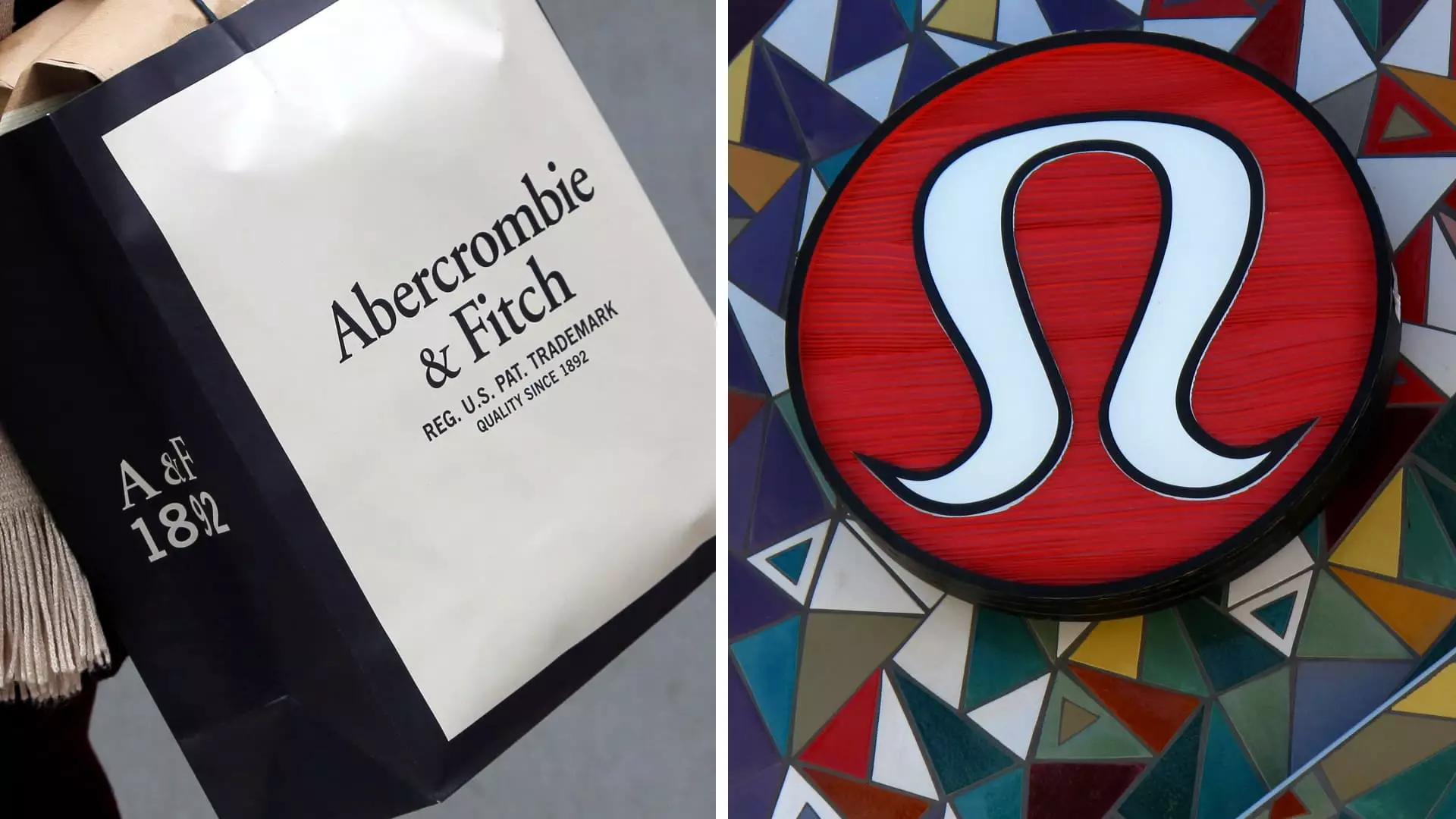The holiday season, historically a critical period for retailers, has shown a mix of excitement and hesitation as several well-known brands released their early performances. Notably, despite exceeding expectations, the reactions from investors were tempered, indicating underlying concerns about future growth potential. This article delves into the current state of prominent retailers and their outlook post-holiday season, offering insights into what these trends suggest about the forthcoming retail landscape.
Big-name retailers, including Lululemon, Abercrombie & Fitch, and American Eagle, reported positive holiday season results that surpassed early projections. For instance, Lululemon increased its fourth-quarter forecasts, predicting sales growth between 11% and 12%, which is a substantial uptick from prior estimates. This raised expectation is not only a demonstration of Lululemon’s strong product appeal but also its effective holiday marketing strategies that resonated with consumers.
Interestingly, while the strong numbers initially created a buzz, the stock performances of these companies told a different story. Shares plummeted, some by over 5%, as market sentiment shifted swiftly from optimism to skepticism. Investors seemed to be wary, particularly of Abercrombie & Fitch, whose stock saw a staggering decline of nearly 20%. Such a drop begs the question: are investors losing confidence in brands that previously enjoyed explosive growth?
Abercrombie & Fitch’s situation is particularly telling. Although the company raised its holiday quarter projections, it still fell short of last year’s remarkable figures, where it recorded a phenomenal 21% rise in holiday sales compared to the previous year. The dip in growth can be attributed to several factors, including the natural constraints of scaling after rapid expansion and the challenge of meeting consumer expectations set by last year’s performance.
The company’s CEO, Fran Horowitz, has acknowledged this trend and outlined a shift in focus from sheer sales volume to profitability. As Abercrombie matures, maintaining high growth rates becomes increasingly difficult, especially in a retail environment that is constantly changing. Investors need to be cautious; after two years of double-digit growth, the brand’s strategic pivot towards sustainability and consistent profit margins may necessitate a reassessment of growth targets.
Conversely, Lululemon remains an outlier among its peers. The company’s leadership expressed confidence in the brand’s ability to continue capturing market share during the crucial holiday season. Its optimism is supported by a robust performance and a positive outlook for gross margins, which are now anticipated to increase. Such growth is particularly notable as it reverses prior forecasts of declines. However, it is crucial to recognize that while Lululemon projects continued growth, the sustainability of its momentum amid changing consumer behavior poses questions for the future.
Meghan Frank, the finance chief, credited their updated guidance to customer enthusiasm for their product offerings. Nonetheless, this positive outlook may also serve as a potential indicator that investors should remain vigilant about the market’s overall health and how brands navigate shifting economic conditions.
In stark contrast to the successes of Lululemon and Abercrombie, Macy’s reported disappointing results, setting a tone of caution as they anticipate lower-than-expected sales during a crucial quarter. Despite the resurgence of physical retail post-pandemic, Macy’s struggles signify larger issues within the department store sector. Consumers have shown a preference for experiential shopping and are gravitating toward specialized retail, putting traditional department stores in a precarious position.
With consumer spending shifting and various economic pressures at play—including inflation and changing shopping habits—Macy’s inability to meet sales targets illustrates the transformative nature of the retail landscape. As the department store model evolves, the need for innovation remains paramount.
As the retail community looks ahead into 2024, there are both challenges and opportunities on the horizon. The National Retail Federation’s cautious growth predictions suggest a tempered recovery as inflation and changing consumer behaviors continue to shape purchasing patterns. It’s essential for retailers to remain flexible and responsive to these shifts, focusing on product relevance and customer engagement strategies.
Moreover, the annual ICR conference serves as a critical juncture for retailers to recalibrate their strategies. It offers an opportunity for leaders to share insights and foster relationships with investors that may help navigate the challenges that lie ahead.
Ultimately, as early indicators suggest a possible bright spot for the holiday season, the mixed reactions from investors signal a nuanced perspective—one that celebrates holiday successes while remaining wary of the sustainability of growth amid an evolving retail landscape.

